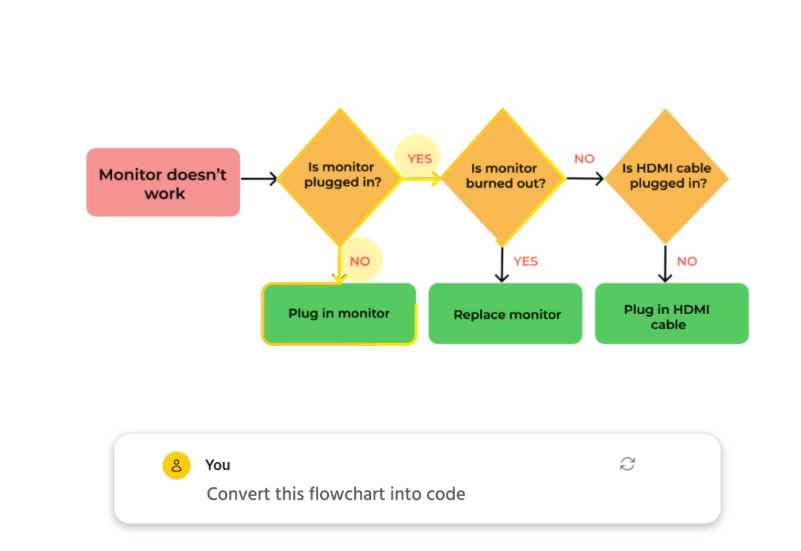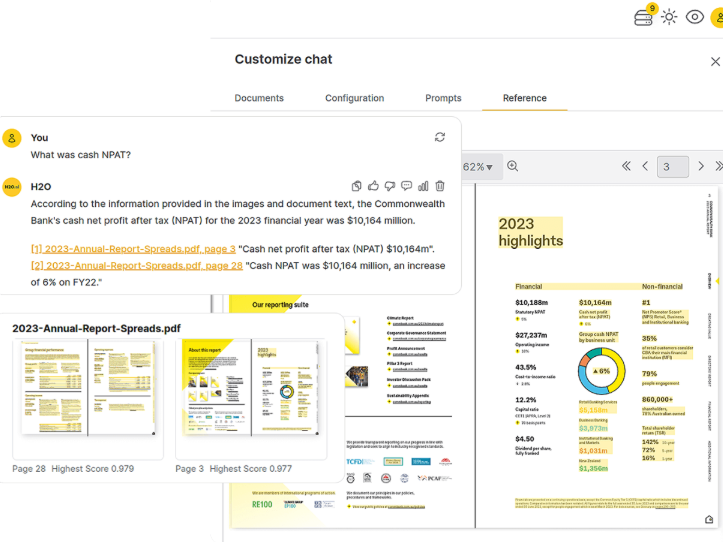H2O.ai announced the launch of its multi-agent platform h2oGPTe, which combines generative and predictive AI models to provide enterprises with more consistent and reliable AI responses. Unlike solutions that rely solely on generative AI, h2oGPTe combines predictive models to improve the consistency and predictability of responses. It is especially suitable for enterprises that need to handle complex multi-step tasks, such as finance, telecommunications, medical and government industries. The platform emphasizes data security and compliance and provides a variety of functions, such as multi-modal document AI, audio and visual analysis, coding assistants, etc., to meet the diverse needs of enterprises. h2oGPTe also focuses on transparency and traceability, allowing users to view the databases, models, and workflows used by agents.
H2O.ai recently announced the launch of its new multi-agent platform h2oGPTe, which combines generative and predictive artificial intelligence models to provide enterprises with more consistent responses. Sri Ambati, founder and CEO of H2O.ai, said that one of the needs of enterprises for AI agents is to maintain response consistency.

The h2oGPTe platform utilizes H2O.ai's own models Mississippi and Danube, and also has access to other large and small language models. The platform supports operation in different environments, including air-isolated, on-premises and cloud systems. Ambati emphasized that combining generative and predictive AI allows enterprises to use these agents with greater confidence without compromising security.
The main functions of h2oGPTe include:
1. Multimodal Document AI: Able to provide accurate query responses from secure internal data sources such as document libraries and knowledge bases. Supports generating structured JSON format output, suitable for contract summaries and compliance data extraction.
2. Audio and visual analysis: Extract structured data from audio files, images and handwritten documents, suitable for information-rich visual fields. The audio model supports multi-language transcription and translation, and the visual model enables content verification.
3. Coding Assistant: Helps developers quickly generate the basic code of the project, supports common programming languages - provides code completion and document generation, and accelerates the development process from concept to prototype.
4. Autonomous intelligent agents: Agents can automate multi-step workflows such as network research and data modeling. Multi-page PDFs can be generated based on real-time data, ensuring transparency.
5. Reference verification and transparency: Using advanced retrieval enhanced generation (RAG) technology, it supports embedded document references to improve the transparency and verifiability of AI responses.
6. Customizable security guardrails: Provide granular access management and response restrictions to ensure data security and compliance in sensitive environments
7. Intelligent model routing: Dynamically select the most suitable model based on real-time evaluation to optimize efficiency and performance.
8. Model risk management: Transparent model evaluation, combined with human feedback and automated testing, improves compliance and explainability.

Ambati pointed out that generative AI performs well in content generation, especially code generation, while predictive models provide greater help in scenario simulation. Predictive models learn patterns in data to ensure that agents respond more consistently. He gave an example that although interactions between humans may be variable, they still expect to get consistent responses, and this is the value of combining predictive AI with generative AI.
The h2oGPTe platform is particularly suitable for enterprises such as finance, telecommunications, healthcare and government that need to handle multi-step tasks. The platform's agents can process multimodal data, such as charts, and answer questions like "Should my company sell more dolls this year?" taking into account the company's historical financial data and the market. Trend information.
In addition, H2O.ai's agent can generate PDF documents containing charts and tables to visually display information and ensure that data sources are cited for data traceability. The platform also has built-in model testing functions, including automatically generating questions and simulating different questions to test the consistency of the agent's responses. At the same time, users can view which databases, models or parts of the workflow are used by the agent through the dashboard.
As the boom in AI agents continues, it is crucial to ensure the value provided by the agents, including consistency, reliability, and accuracy. The way H2O.ai combines generative and predictive models is an exploration that other companies are also looking for to ensure that AI agents do not cause trouble for enterprises, such as the Agent Graph System launched by xpander.ai and the Agentforce Testing Center launched by Salesforce. .
Product entrance: https://h2o.ai/platform/enterprise-h2ogpte/
Highlight:
H2O.ai's new platform h2oGPTe combines generative and predictive AI models to provide more consistent responses.
The platform is particularly suitable for enterprises such as finance, telecommunications, healthcare and government that need to handle complex tasks.
H2O.ai focuses on data traceability and agent testing to ensure the reliability and accuracy of the agent.
All in all, h2oGPTe provides a more reliable and trustworthy solution for enterprise-level AI applications by integrating generative and predictive AI models to ensure response consistency while also taking into account data security and compliance. Its versatility and powerful model risk management capabilities make it ideal for enterprises handling complex tasks.